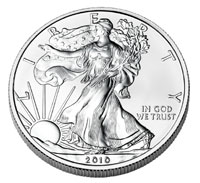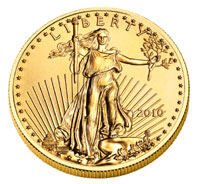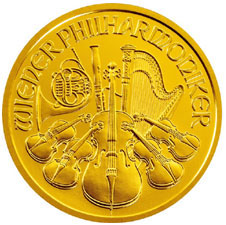 During May 2010, the United States Mint’s gold and silver bullion sales levels reached their highest level in a decade or more for the two most popular offerings. This heavy demand for physical gold was experienced by several world mints last month, driven by concerns and uncertainty about Greece and the Euro.
During May 2010, the United States Mint’s gold and silver bullion sales levels reached their highest level in a decade or more for the two most popular offerings. This heavy demand for physical gold was experienced by several world mints last month, driven by concerns and uncertainty about Greece and the Euro.
The United States Mint sold 190,000 of their 1 oz. American Gold Eagle coins. This ranked as the highest monthly sales total for the bullion option since January 1999 when 208,500 coins were sold. The all time record high for sales in a single month took place in October 1986 when 609,500 of the one ounce coins were sold.
There were 3,636,500 of the 1 oz. American Silver Eagle coins sold during May 2010. This was just shy of the all time monthly sales record of 3,696,000 coins sold in December 1986. The month of May ended with a three day weekend, if one more day of sales had taken place, the record may have been broken. It’s worth noting that Silver Eagle bullion coins are also subject to the US Mint’s allocation (rationing) program, meaning these impressive sales still do not reflect full public demand.
Recent articles report similar surges in bullion coin demand. Production of Gold Krugerrands by the Rand Refinery reached their highest weekly production levels in 25 years. The treasurer of the refinery cited Germany as a large source of demand. The Perth Mint of Australia which did not provide production levels, has doubled their capacity over the past 18 months. As soon as the European Commission announced that they would bail out Greece their stock of gold “all went.”
 The
The 
 For countless months, authorized purchasers of US Mint gold and bullion coins have been subject to a rationing process, which limited the number of coins they could purchase. The rationing program had been put into place after the demand for gold and silver coins exceeded the US Mint’s ability to supply them. In a few recent posts I have provided some indications that the shortage of American Silver Eagles and American Gold Eagles
For countless months, authorized purchasers of US Mint gold and bullion coins have been subject to a rationing process, which limited the number of coins they could purchase. The rationing program had been put into place after the demand for gold and silver coins exceeded the US Mint’s ability to supply them. In a few recent posts I have provided some indications that the shortage of American Silver Eagles and American Gold Eagles  Sorry for the lack of posts lately. Let’s get back into the swing of things with a round up of some gold and silver related stories for the past few days to bring things back up to speed.
Sorry for the lack of posts lately. Let’s get back into the swing of things with a round up of some gold and silver related stories for the past few days to bring things back up to speed.